The 50 States Project is a series of candid conversations with interior designers across the country about how they’ve built their businesses. This week, Richmond, Virginia–based designer Jessica Williamson tells us how she pivoted from commercial design to running her own residentially focused firm; the unique advantages of bringing her husband into the business; and how she sets her team up for success at High Point Market.
When did you start to see the design industry as a potential career?
In fourth grade, my dad said to me, “You know what you’d be really good at, Jessica? You would be really good at interior design.” And I literally did not think of another career after that. It solidified in my brain: That’s what I was going to do with my life. I went to visit my sister at Virginia Tech—she was a year ahead of me—and I fell in love with the school. Then I found out they had a great interior design program, so I ended up applying early. But you started as a freshman without actually being in the interior design program—you had to go through an entire year of interior design studio before they would accept you.
What were your expectations at that point for how your career would unfold?
I’m sitting there the first day thinking that I’m going to learn all this stuff about fabrics and wallpaper and space planning, and that I would start a residential design career after I graduated. Instead, on day one, it’s like, “Let’s talk about theory.” It was so incredibly challenging. I actually teach at Virginia Tech now as an adjunct professor, so it’s always fascinating to remember that early stage when I really thought that design was going to be just the beautiful. And I don’t say that in a condescending way—I just really felt like I knew what design was, and in that very first year of school, I learned all the other things that design could be. I got a wider view, and I was so hooked.
How did that experience shift your goals?
Originally I thought I was going to go straight into residential. By the time I was done with school, I was dead-set on workplace design. All I wanted was to work at the top firm in the world.
And that’s exactly what you did, right? What was it about workplace design that drew you in?
I did. I was at Gensler for 10 years after graduating, and for me, it was the thrill and the excitement of the scale. It was the early 2000s, and workplace design was becoming very employee-centric. I liked that there was a human element to it, which is what I had always loved about the idea of residential. But it was done on a larger scale, so you could have a great impact on people and how they function during their day. I was always challenged with a new problem, and it never felt stale. Even when I worked on one project for like five years straight, for the most part it was very dynamic.
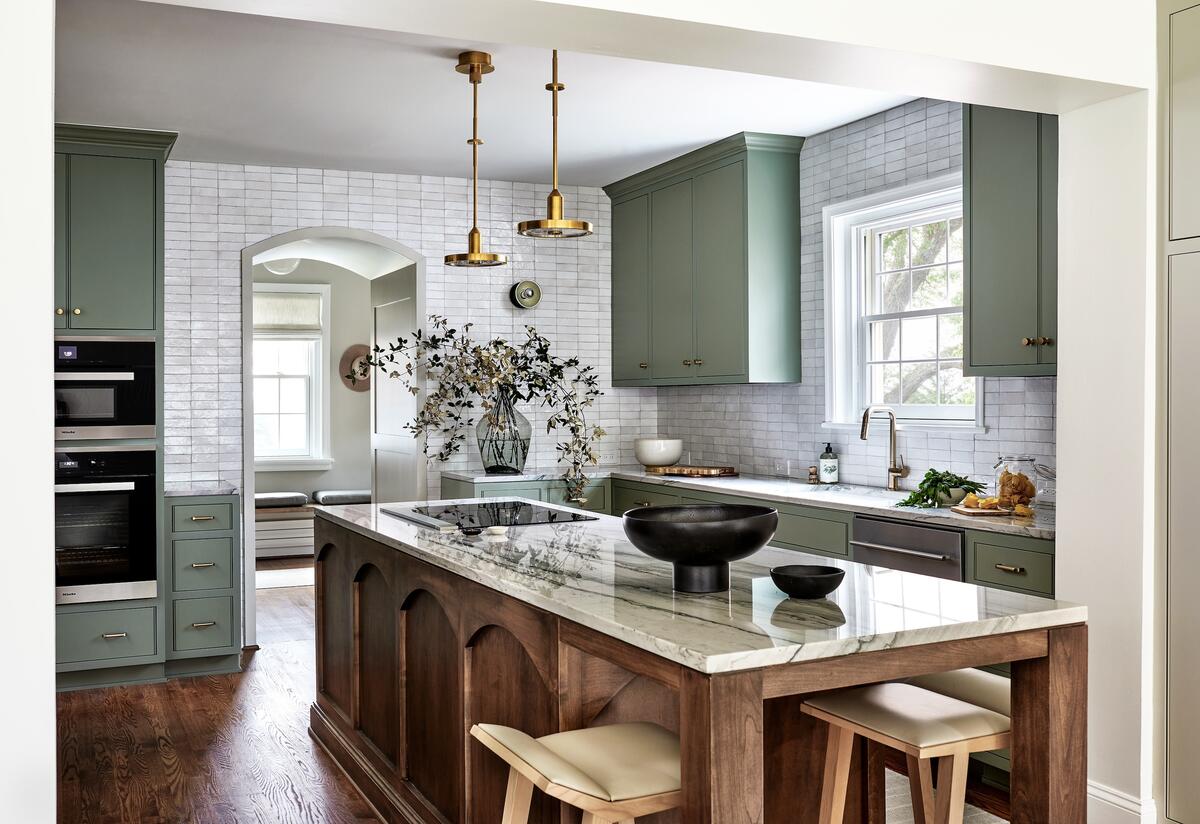
What made you make the next move?
I’m an all-in or all-out kind of person. I invest my time very actively and passionately. There was no negative catalyst that pulled me away—this was a positive catalyst, and it was that having children was a really important part of my story. It’s something that I always wanted to do. So in my head, I was like, “Well, I’m going to work here, and I’m going to give it my all, and I’m going to climb through it as far as I can, and then when I have kids, I’m going to stop and focus on that, and then I’m going to start my own business, and it’s just going to work itself out.” It sounds super silly to say out loud, but that’s what was in my brain.
That’s not silly at all.
I remember my husband, Mark, saying, “So Jessica, when are you planning on going back to work?” And I was like, “You know, I don’t know that I will. I think I may just build this business, and then eventually it’ll just take off.”
What I actually ended up doing was working part-time for Gensler from my house in Maryland, doing things like furniture specifications for law offices, but I never went back to the office in D.C. Like I said, I never felt like I could do both—I felt like I was either all in on working in my corporate job or all in with my family. Then I had a friend refer me to their friend, a bachelor who had just bought a condo in D.C. He said, “Hey, I need help. I’ll give you the reins. Here’s my budget. Just do it.” And it was awesome, because it was like, “This is trust. I’m by myself, so you don’t trust the backing of Gensler—you trust me.”
Was that job what inspired your shift back to residential work?
Because I was going to be working during my children’s nap times and on weekends, I could not see a world where I could enter back into that corporate arena as a client service person. They would need me to have meetings on-site at 8 a.m., and I couldn’t do that. But I knew that residential would give me that flexibility.
I will say, I had a massive mental confusion around the differences between residential and commercial at first. Having more knowledge of what a residential firm looks like would have been so helpful to me, because I had no clue what I was doing. I had so much confidence going into the unknown, and then working for a big firm—and then all of a sudden, I was like, “Maybe I should call it quits. Maybe this is not the path for me.”
What about that transition was so challenging?
I had this aha moment where I realized that design is design is design. No matter what practice area you’re working in, the client service is the same. The process is the same. The documentation should be the same. There are different vendors and different procurement processes, sure—but once I whittled it down to [clearly identify] those differences, it was like, “Oh, I know what I’m doing.” It was a total game-changer. But it took me almost two years to gain that confidence that I was meant to be doing this as much as I was meant to be doing workplace design. Is that weird?
It’s so interesting to me that you felt like the client relationship was the same. From the outside, that feels like a huge difference—designing intimately for an individual versus designing more broadly for so many.
Maybe because of the workplace work that I did—I was working for law firms and private service companies—I always looked at the people. Whether they were administrators or facilities directors, I always felt like they were super passionate about what they did, too, and I approached the project as though they were my one-on-one clients. They had a specific set of needs to be fulfilled in order for them to do a good job in their life and in their work. The budget piece does change. When it’s not their own money, there’s a bit of a difference in the client service. Now it’s way more personal: I’m spending money out of the client’s pocket.
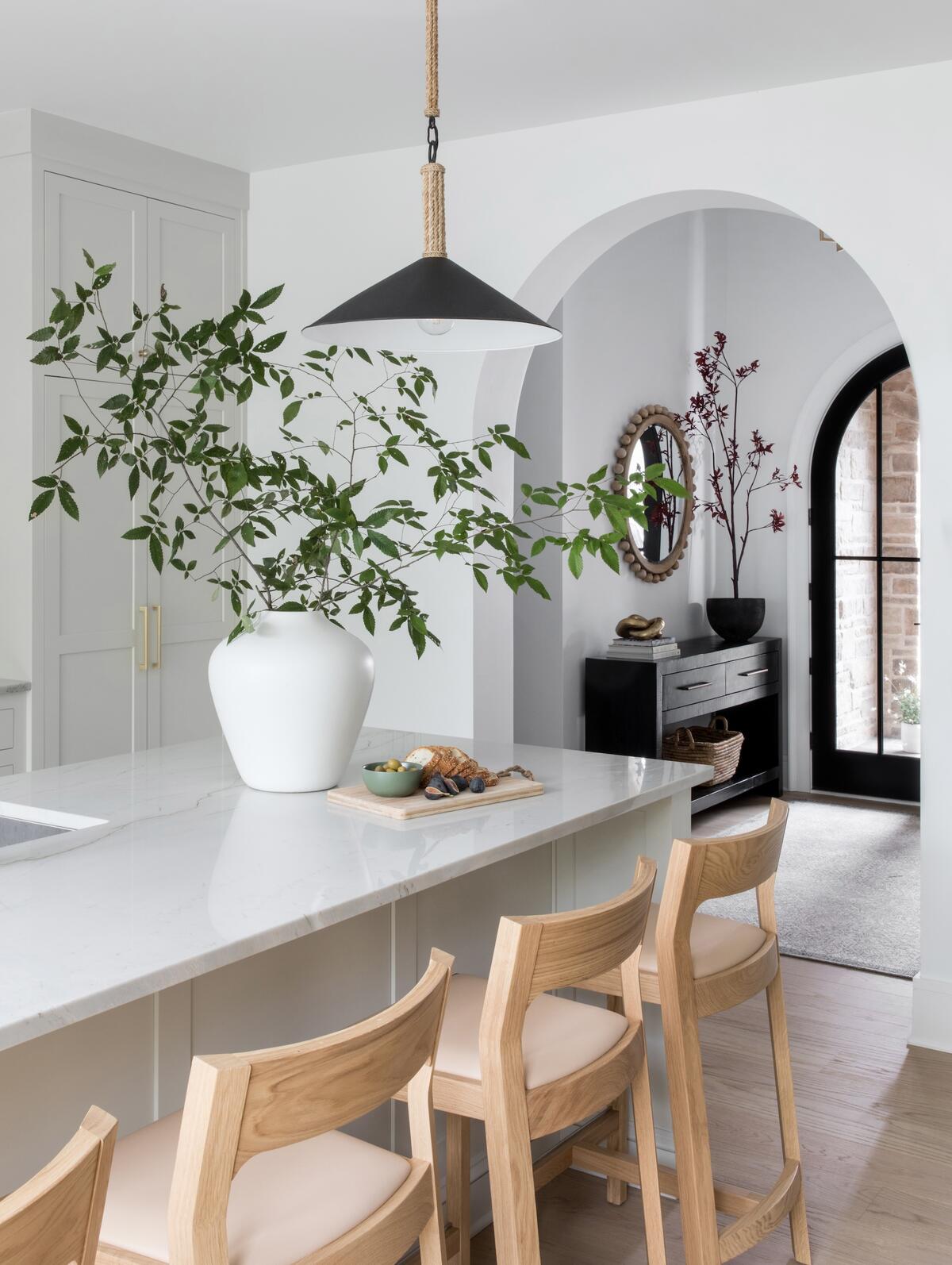
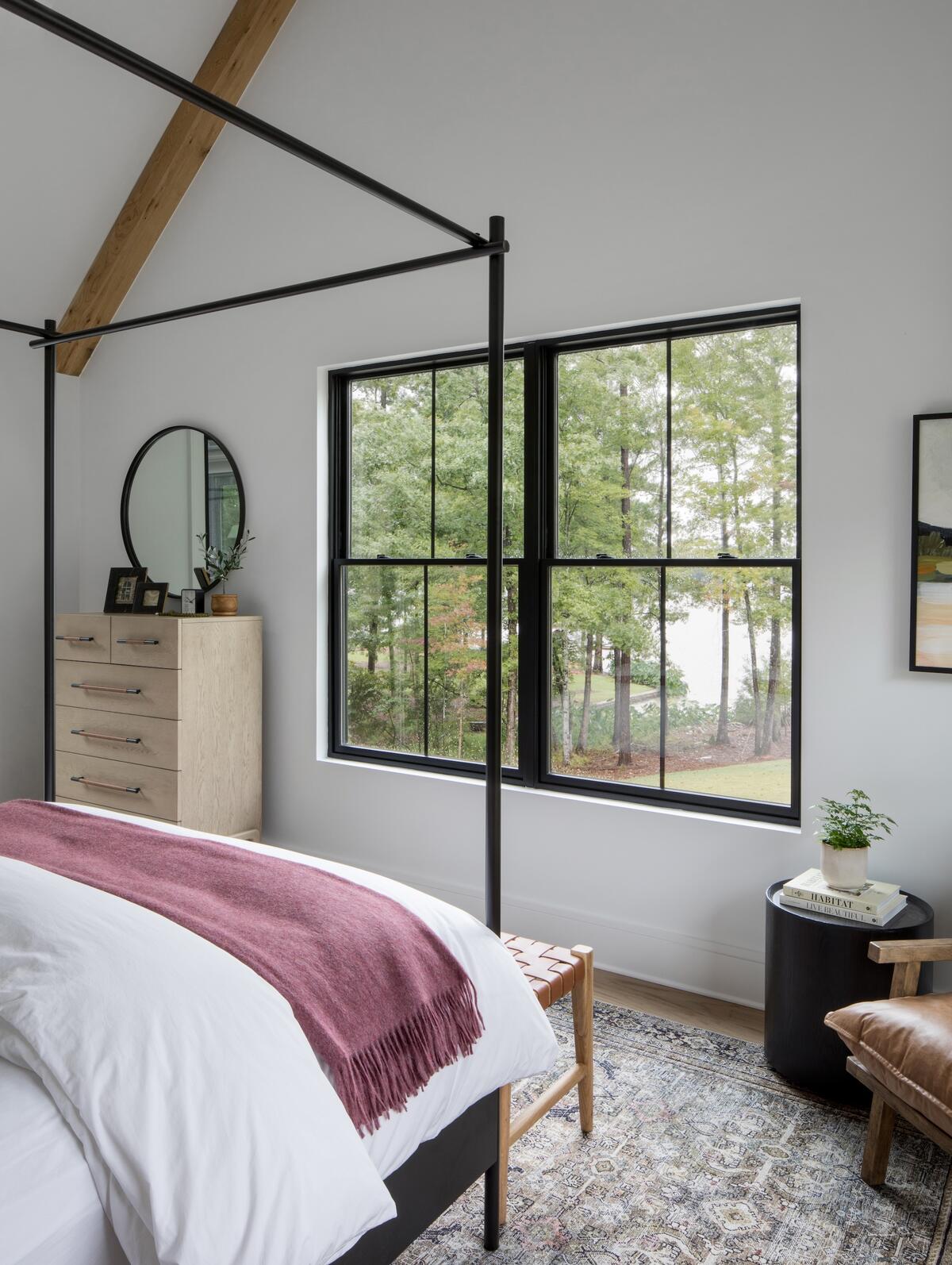
What year did you officially go out on your own and launch your business?
Well, the business bureau would say that I started it in 2010, because that’s when I registered, but actually committing to it was probably 2012.
What does the company look like today?
We are a team of four full-time designers: Myself as design director; a lead designer who’s been with me for four years; and then I just hired two new designers this summer. One was at a hospitality firm for seven years, so she comes with great experience in hospitality and multifamily work, and then I hired a fresh-out-of-school Virginia Tech graduate who I actually taught last year. We also have a part-time procurement specialist who does all of our quoting, ordering and procurement proposals and keeps all the vendor stuff organized. And then I have a client concierge—as I mentioned, client service is huge for my company, so she focuses on all of our client gifting. And then my husband joined us in 2021 as our director of operations and accounting, which was a huge shift in my business. It’s funny: When he asked me if I’d ever go back to work and I said, “I think it’ll just work out,” never in a million years did I think that it would work out to be him joining my business.
I want to come back to that. But first, can you tell me about your gifting strategy?
We implemented a gifting strategy a few years back because we want our clients to feel pampered, heard and connected to us at all points. At various points along our projects, we gift them something meaningful. She’s taken that on, and she also prepares the office for client meetings.
Who was your first hire, and what were you looking for first as you started to build your team?
When I hired my first employee back in 2017, I didn’t know what I was doing. There was no great strategy; I just knew that I needed help, so I hired somebody to help me as a design assistant. But the person I hired didn’t have any experience in interior design. She’s amazing and wonderful, and she dedicated so much of her passion toward my business, but it got to a point where there wasn’t a lot that I could just hand off. But I don’t look back on it negatively at all—it was a great opportunity to understand what having employees is like, and helped me realize that it’s important to hire people who can do things so that you can level up the work you’re doing.
How has your role changed as you look to offload things?
Until I hired my lead designer four years ago, I did not quite understand that I was at a point in my career to be capable of hiring really smart professional designers—I always felt like that was way down the road for me. But she came to me during Covid, right as we were getting slammed, and hiring her opened my eyes to how much I absolutely love collaborating. Suddenly, I did not necessarily always have to have all the answers, and I loved that. For me, that was the way that it was at Gensler—there was lots of collaboration, and you were able to turn to different people for their expertise. I had forgotten that, and I didn’t realize how much I missed that collaborative spirit once I was a solo designer. When our lead designer came on board, I realized that I could dig into her brain—and also give her the freedom to design. So by the time I hired the two designers this summer, it was like, “Boom. Let’s go.” They are completely ready to do it, and I am going to give them the freedom to use their brain power, expertise and experience to up-level our work.
I’m now in a design director role, and it’s interesting. It took me a little bit of time to provide that freedom to the design team—even if they were ready, I wasn’t ready. That’s been a major growth point for me this year: I am now able to do my best work, because I’ve realized that my best work is managing clients, overseeing design,and making sure that what the clients need is being executed. I’m managing the contractor side of the business, making sure that everyone is communicating and collaborating at the right points from an efficiency and client service perspective, and then really making sure that the overall look and feel of every single one of our projects is being consistently executed.
Before, I was so in the weeds on all the things—and when you’re in the weeds, it’s really hard to step back and go, “How are we actually doing? Does this project make sense? Do these decisions make sense? Are we pushing the envelope? Are we really listening?” Being able to ask those strategic questions of my team—as opposed to telling them the answers—has been a huge turning point for me, and I’ve seen tremendous growth within my team. The quality of work that’s come out of our firm this year has blown me away—and I say that with the complete humility of knowing that I was a small part of that rather than the whole of that.
Is it just as fulfilling? Is the big picture enough, or do you miss the weeds?
The big picture is enough. I would be lying if I told you that I don’t get jealous of the designers’ day-to-day sometimes—I definitely miss some of that. At the same time, I’m still involved in concept creation, and I do all the floor plan reviews. I’m involved in every single part, honestly, but I’m not in the day-to-day sourcing, going through a vendor’s line and exploring every single mirror option that they offer.
This year has really taught me [the value] of everyone being in the right seat. If you’re not in the right seat, you’re not going to be effective, and the people around you are not going to be able to do their jobs as well. When I stepped back, it allowed the design team to grow; at the same time, I know that if I didn’t provide the parts that I provide, we would be lacking. I see that I’m in the right seat, I see that they’re in the right seat, and it feels really successful.
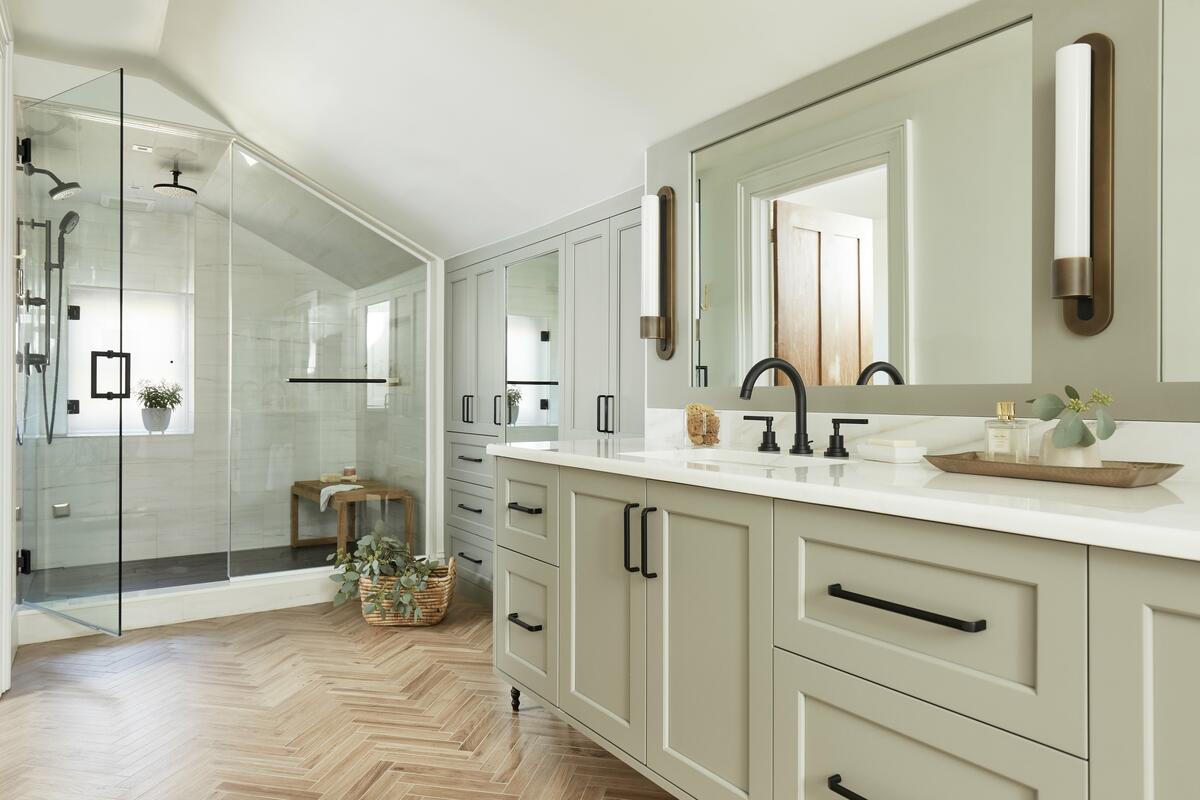
What does a full plate look like for the firm now?
It’s probably 15 to 18 projects at a time. Work-family balance is huge in this company—huge. I do not want our team to feel overstretched, so we plan out when we can start every single project. Mark has been really strategic about understanding our capacity since he joined the firm, and so far, we have started every project on time. We can be confident that when a client pays our retainer, we’re going to put them on the calendar, and then we’re going to send them an email a month ahead of our start time to book out the first two meetings. It’s a nice, well-oiled machine. Now, who knows what’s going to happen after those first two meetings, right? [The] pricing [conversations change], or the contractors are slow, or whatever it is, but at least we’ve got a strong jump toward starting the project. That means we’re all still able to come in at 8:30 or 9 a.m. and leave the office at 4:30 or 5 p.m., and not need to work weekends or work late. I will say, work-life balance is not what I had at Gensler. And while I loved it and I threw myself at it, I don’t want that for my team. I protect them at all costs.
How do you decide what you say yes to today?
I think it’s kind of the same idea of being in the right seat: It’s a matchmaking process. If I’m not working on the right projects, then the client’s not going to be well served. I used to be the designer who said yes to everything because I didn’t want to turn away work. It was like, “Somebody wants to work with me, so I can’t let them down.” But I realized that the more projects I took on that weren’t in line with our service offerings, and the more I had to stretch what we did to make it work for them, the more I wasn’t doing a service to anybody. That’s when I realized that client service is huge for me, and that remodel work and new construction is where we soar.
We took on a project in Lake Oconee, Georgia, sight unseen in 2019. With the pandemic, we ended up going through architectural plan review, modifications and permitting remotely. We made every single architectural selection—every cabinet piece, all the stair parts, all the flooring decisions, all the exterior materials, everything—without going to Lake Oconee. We didn’t even physically see the project until we went and photographed it. That project was such a great legitimizer—it was a reminder for me that this is the world we should be in. We should be in the world of designing a project, putting it together in documents, and then working with a team to execute it properly. And once I realized that, it became very easy for me to say [to a client with a project that’s too small]: “We are more than you need.” It becomes more fact-based and less emotion-based.
Are you assessing client fit primarily based on scope of work, or is there also a vibe check?
It’s both. We have an inquiry form on our website that asks a lot of questions, and then we do a 30-minute discovery call with every client before meeting. I like to give the client a lot of time to talk about their project, their drivers, what brought them to me, why they’re even doing this project—all of that is really helpful for me to ascertain how great of a fit we are.
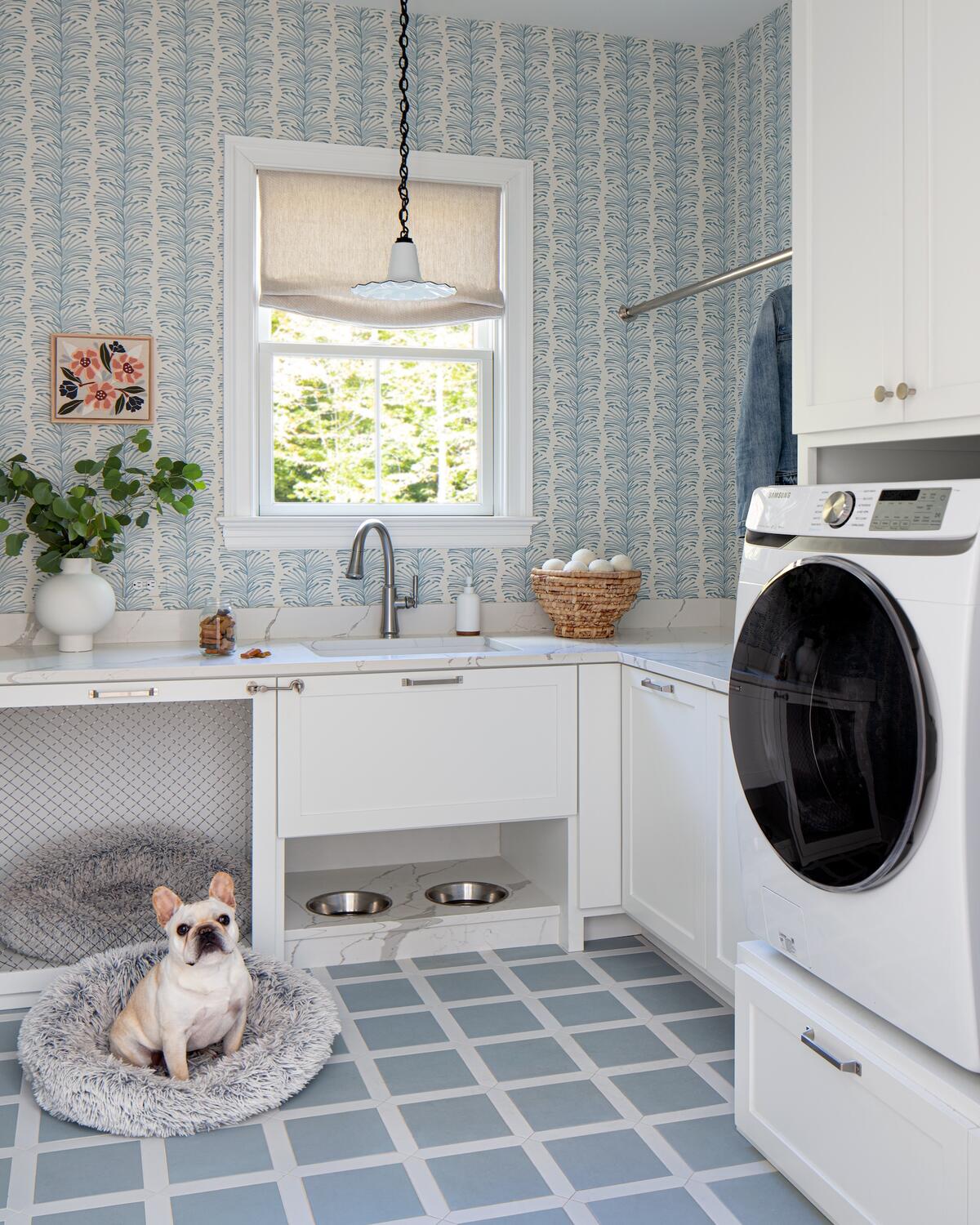
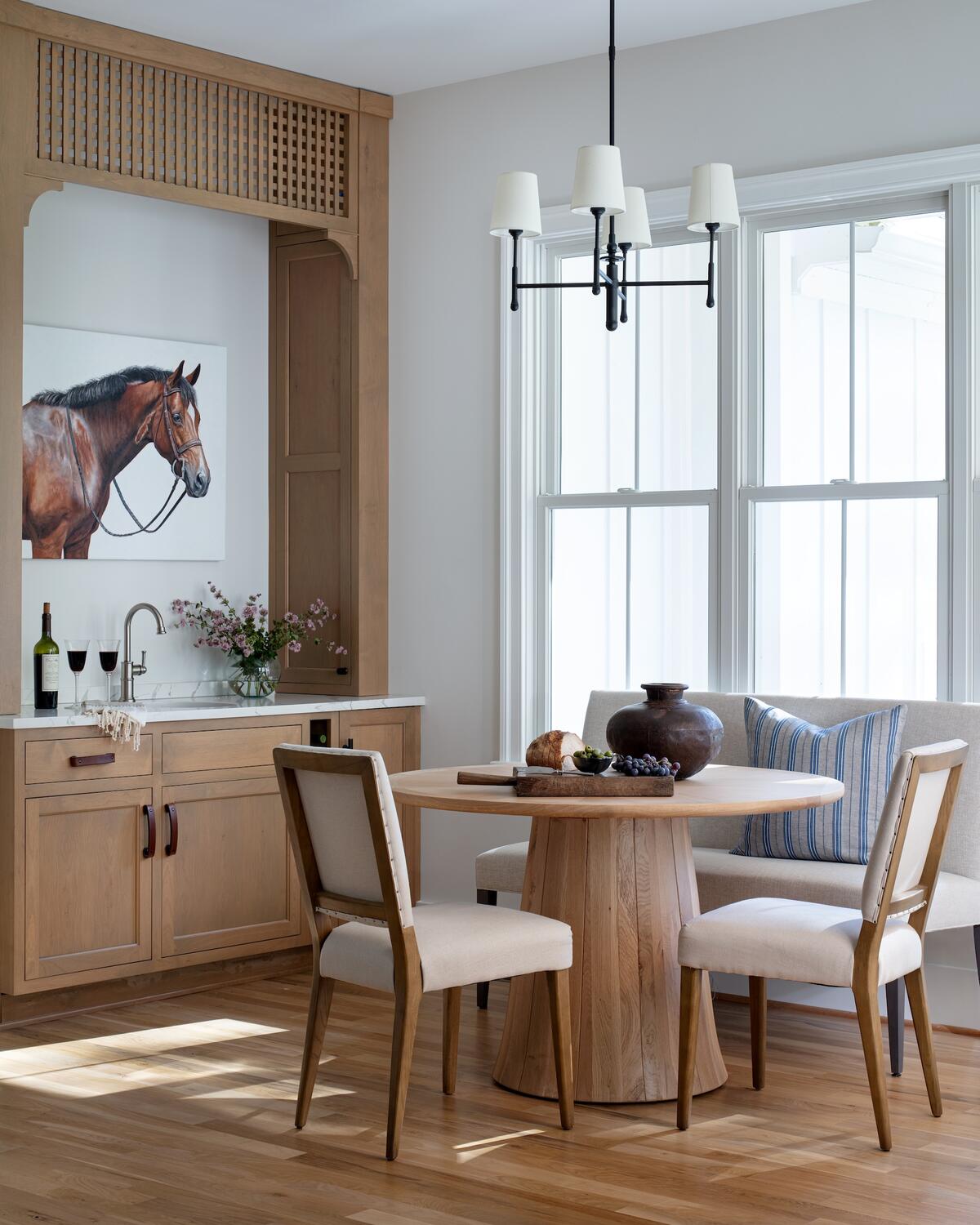
Did zeroing in on full-home renovations and new builds shift how you approached billing for the work?
Originally, every project was billed hourly—and we still do some projects hourly. Now it really depends on the client’s confidence in their scope. If a client comes to me and says, “We’re gutting the whole first floor, hiring a contractor, and permitting it. We need an architect. We need furniture. And we want it done in the next two years”—for something like that, I will most likely do a fixed fee with phase-based payments, and we have a set number of hours that we’ve assigned to those phases.
When he joined the firm, Mark reviewed a lot of historical data to figure out how much time we actually spent on our projects. Now, he helps write all of our proposals to get them really accurate—and they’re pretty darn accurate. And the hours on every project are tracked no matter how we bill it, because I do use that historical data all the time. Mark will run a report to see where we landed [compared to our projections], and we will adjust the percentages of our fee that we charge for that phase. We recently bumped up the fees for phase one because we realized that we were digging so much further than we used to—and that was because we were just up-leveling the amount of work that we were doing—so we adjusted the fee so it would be accurate.
In which cases do you opt for hourly billing?
If there’s a lack of confidence or an ambiguity in the scope, we’ll explain to clients that we have two ways of billing, and hourly is the way we’ve chosen to do it for their project. Internally, we track it the same way; it just gives more flexibility to be able to have the dialogue with the client about where we are. It’s just a different way of communicating, and both are effective.
Now that Mark has taken it over, it is a lot less painful. I still review every line item of every invoice before we send it out—and actually, I still send all the invoices myself, but he puts them together, evaluates them and gives me his notes, and then we review it. But I used to dread it at the end of every single month. And also, I wasn’t having a capacity meeting with myself. I had no clue where we were on the overall billing of a project until I put the invoice together each month—and a lot can happen in those four weeks. That’s why we’ve moved to doing a capacity meeting once a week: I wanted to have a better understanding of where we were at any given moment. If a client has a question, or we need to modify a project’s scope, I know how flexible we can be. Before any of that, it was very uncomfortable—and because I was uncomfortable, it put me in a position of lacking confidence. The moment I would get questioned by a client, I would assume that I needed to change it; now if I get a question, I have enough information and data from our weekly meetings to feel confident saying, “Let’s have a conversation.” I’m less defensive, and I’m less likely to assume that it’s automatically something I have to fix. I’m in more of a position of confidence, and I feel so much better.
Does having a partner to talk money with make you less inclined to second-guess those invoices?
Oh, yes. Mark is awesome about saying, “Here’s where you are on this project. This is where we said we would be. What feels good to you? Do you feel like there were inefficiencies? Do you feel like we need to adjust the hours?” But we get to have that conversation before I have to send it out to the client, so I can send the invoice going, “I bet they’re going to have a question about that,” and I’m ready with the answer and ready to have the dialogue because we’ve already had the dialogue internally.
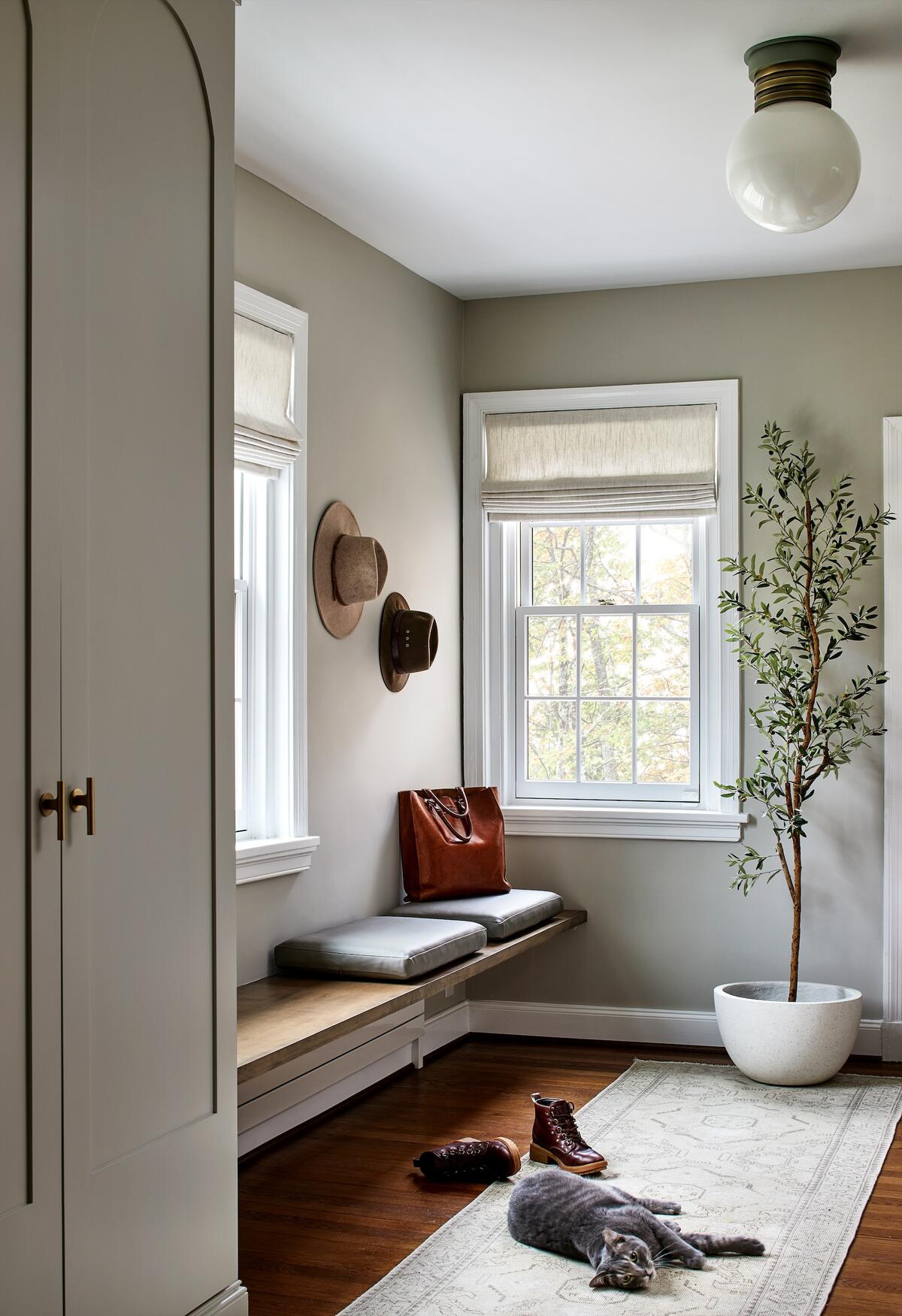
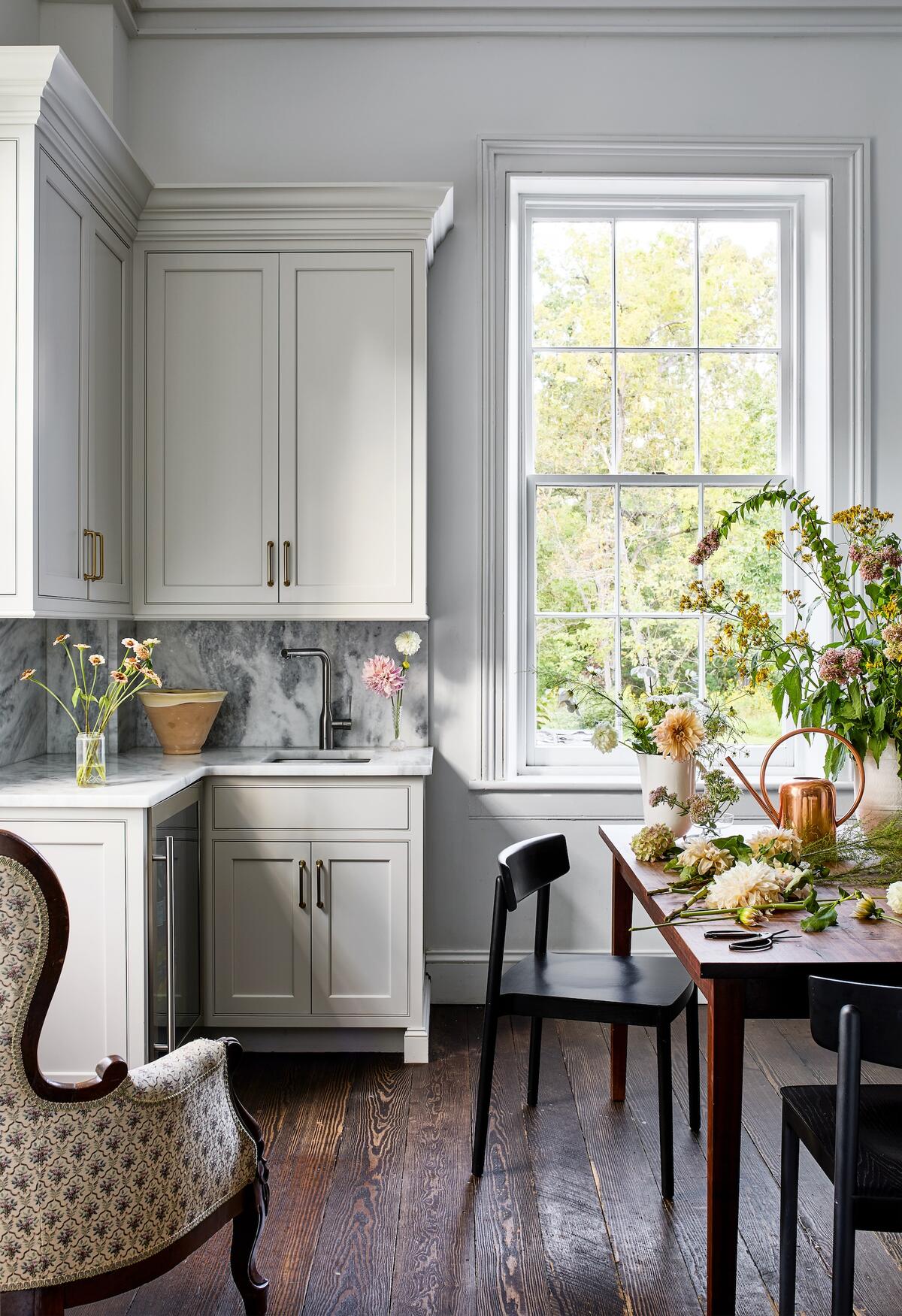
I’ve noticed an increasing trend of female-owned design firms bringing on their husbands to manage the business side, especially since the pandemic.
I would agree.
For you, is that operations role one that could have been filled by anyone else, or is there something singular about having it be your spouse?
Well, I can’t speak to other spouses. I can only speak to mine, who happened to be a coach for C-suite executives at an international company. He has a phenomenal business acumen, he’s phenomenal at asking the right questions—but he was also working crazy hours, traveling five nights a week. I had this amazing brain living in my home, but he was so overwhelmed with his own job and our family that I could not tap into it for my business.
When I wanted to grow my business, I actually hired a business coach for two years—Michele Williams of Scarlet Thread—and she was amazing. I was very good at client management, and I was somehow managing to be profitable, but I didn’t know how to take it to the next level. Michele restructured my brain—she helped me understand how I needed to think about my business, so it was a lot of mind coaching in addition to financial coaching. It was phenomenal.
When Covid hit, my husband was not very happy professionally—he loved what he was doing, but he was working unbelievable hours. I said, “You’re not happy.” And he goes, “I know. Why don’t I quit and join your company?” And I was like, “Whoa, what? That’s crazy.” It meant that I could finally tap into his brain. What’s nice about being husband and wife is that we can have very business-minded conversations, but he knows me well enough to say, “Hey, I don’t want you to get defensive about this conversation we’re about to have,” or “I don’t want you to be stressed about the information I’m going to provide for you.” I can have very personal conversations about the business with him.
He’s also very invested in the business because it personally affects him. That’s the layer that I think [spouses have] that goes beyond the relationship you have with a consultant. I don’t have to worry about setting up a call; I could be, like, “Hey Mark, I’m having a problem. There’s something happening right now,” and it’s more of a team approach because you’re a team in life, in parenting and in business, so you know how each move affects the other one and makes a larger whole.
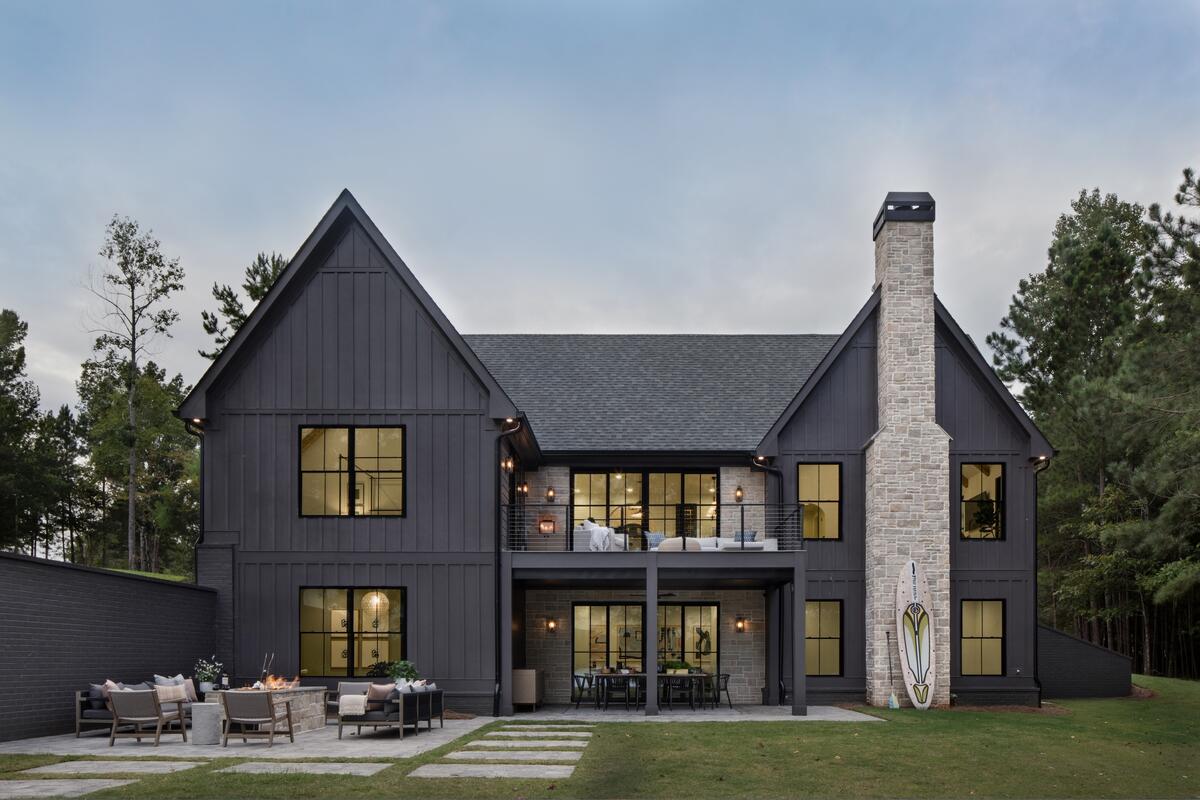
How has the design scene in Richmond shaped some of the opportunities coming your way?
As a state, Virginia has such beautiful locations—we’ve got mountains, beaches, cities—and so the variety of projects is great. And Richmond itself has seen so much growth over the past 10 to 15 years. When I graduated, I did not want to come back to Richmond; I wanted to move to a larger city where I could really stretch my [commercial] design muscles. I wanted to go outside of my bubble. But when we moved back here nine years ago, I saw a massive change. I had visited my family in the suburbs while I was in D.C., but I hadn’t understood what was happening here. The restaurant scene has grown, and we’ve also seen a big influx of people moving into the city from D.C., New York, New Jersey, California—my firm has a lot of clients coming from various states, and they’re bringing another layer of design expectations to this area. On discovery calls, I’ll ask what brought them to us, and lately I’ve had a lot of people tell me: “Well, we really wanted somebody who didn’t look like traditional Richmond.” And while I am obsessed with traditional Richmond, and we do that a lot in our projects, I can tell that there is another layer of design that clients are seeking.
One thing I love about this area is that there are a lot of designers doing a lot of different types of work. That’s exciting. We’ve also got a great publication, R Home magazine—a lot of cities don’t have a dedicated design magazine, so we are lucky in that way, and they’ve been so generous in showcasing our work. There are a lot of amazing craftspeople too—custom lighting designers, woodworkers, cabinetmakers and furniture makers doing quality work for clients from across the country. We’ve been really well served by the talent here.
Beyond that local talent, what is the most helpful way to discover new products?
[This winter] we went to the Kitchen & Bath Industry Show for the first time, which was huge, and we do High Point Market once a year. We’re always looking at magazines to make sure that we’re really sourcing unique pieces. I think because of our experience in workplace and hospitality design, seeking out the unique is really important—not getting stale on the same lighting vendors or the same case goods manufacturers.
Designing custom furniture is a big passion for us. If we can’t find it, [we say], “Let’s just design it.” We find our way to something truly custom, not just the upholstery. We also collaborate with artists. One of our best resources has been Shoppe Object. We didn’t go to the [main] New York show, but they showed at High Point the past three Markets, so we’ve seen two of them. That’s been really cool.
So were you there a few weeks ago?
Yeah, I took the whole design team, all four of us. That was awesome, because we get to really have conversations as a team about what we love, the trends we are seeing—and maybe even things we loved before but are not loving again. Who’s doing the same stuff over and over again? Who’s really pushing the envelope? Where are the good details? Where are the thoughtful pieces versus the just pretty ones? I feel like if you just walk around and look at stuff and you don’t have a thoughtful focus on how you’re viewing it, it’s kind of a wasted trip.
When you look ahead, where do you see an opportunity for growth?
I would really like to pop into other arenas. Because we have such a great background in commercial design, I’d like to be able to take what we know about residential and infuse that into other areas. I think that is a strong perspective that could be a value-add to hospitality and workplace design. And right now, we’re doing a workplace design project for a private office that’s a resimercial-type space. And I’m seeing an influx in these since Covid. I remember Michele Williams asked all [of us in her group coaching program], “Where do you see your company going?” One designer stood up and said, “I want to be a household name. I want to be a lifestyle brand.” And now she’s doing it. It’s funny, because I stood up right after her and sheepishly said, “I just want to be known for doing it well and doing it right.” For me, whatever brings us to constantly pushing the envelope and being a great resource—and contractors loving to work with us because our documentation is phenomenal, and clients loving to work with us because we solve their problems in such a beautiful way—that is the nature of success and growth. Being able to do it intentionally, not just growing to grow, but growing in execution.
And then we would love to get more involved in custom furniture design. We are all very like-minded in the way furniture comes together, and what maybe [can be] lacking in the furniture industry—that intention of, Why are we designing things? When you look at antiques, there’s such a thoughtful nature to a lot of them. I would love to be able to bring that back to market [without losing] the focus on comfort we have today.
What does success mean to you?
The cheesy answer is happy clients and happy employees, but I really do think that’s it. As this business has grown, my intention behind the decisions that I’ve made has not been profit-based. We have almost validated what we’re doing by being able to continue to grow, hire a designer, get a better space, those kinds of things. My intention has been validated by those things, and I think that if the intention is pure and good and positive—to serve our clients well, have them be super happy, and support my employees in a way that allows them to grow and be seen and heard and thrive—that’s success to me.
To learn more about Jessica Williamson, visit her website or find her on Instagram.





























